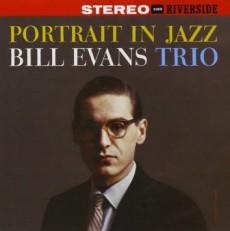
Daily Dose Of Jazz…
William John Evans was born August 16, 1929 in Plainfield, New Jersey and grew up in a turbulent household of abuse. While staying with his aunt family somewhere between age 3 and five he soon began to play what he had heard during his brother’s class and soon he would also receiving piano lessons. At age 7, Bill began violin lessons and also flute and piccolo but eventually dropped those instruments, though it is believed they later influenced his keyboard style.
From age 6 to 13 Evans would only play classical music scores of Mozart, Beethoven and Schubert. During high school he was exposed to Stravinsky and Milhaud but also the jazz of Tommy Dorsey and Harry James. At 13 he stood in for a sick pianist in Buddy Valentino’s rehearsal band where he got his first deviation from the written music, in an arrangement of Tuxedo Junction, leading him to listen to Earl Hines, Coleman Hawkins, Bud Powell, George Shearing, Stan Getz and Nat King Cole among others.
Bill was soon playing dances and weddings throughout New Jersey and then formed his own trio, met Don Elliott, and bassist George Platt who taught him the harmonic principles of music. He would go on to study at Southeastern Louisiana University and in 1955 he moved to New York City where he worked with bandleader and theorist George Russell. In 1958, he joined the Miles Davis Sextet, where he was to have a profound influence. In 1959, the band, then immersed in modal jazz recorded Kind of Blue, the best-selling jazz album of all time.
In late 1959, Evans left the Miles Davis band and began his career as a leader with Scott LaFaro and Paul Motian, a group now regarded as a seminal modern jazz trio. In 1961, ten days after recording the highly acclaimed Sunday at the Village Vanguard and Waltz for Debby, LaFaro died in a car accident. After months of seclusion he re-emerged with bassist Chuck Israel. In 1963, Evans recorded his first innovative solo project Conversations with Myself, and in ’66 met bassist Eddie Gomez who he would work with for eleven years.
He would work with Don Elliott, Tony Scott, Mundell Lowe, Jerry Wald, Lucy Reed, George Russell, Dick Garcia, Art Farmer, Barry Galbraith, Milt Hinton, Joe Puma, Charles Mingus, Oliver Nelson, Eddie Costa, John Coltrane, Cannonball Adderley, Paul Chambers, Philly Joe Jones, Sam Jones, Marc Johnson, Tony Bennett, Marty Morell, Joe LaBarbera and the list goes on.
Despite his success as a jazz artist, Bill suffered personal loss and struggled with drug abuse. Both his girlfriend Elaine and his brother Harry committed suicide, and he was a long time user of heroin and later cocaine. As a result, his financial stability, personal relationships and musical creativity all steadily declined during his later years.
On September 15, 1980 pianist, compose and arranger Bill Evans who played in the modal, third stream cool and post-bop genres, passed away at age 51in New York City from complications due to peptic ulcer, cirrhosis, bronchial pneumonia and untreated hepatitis. His recordings for Riverside, Fantasy and Verve record labels left a seminal collection for the avid and casual listener, he was inducted in the Down Beat Jazz Hall of Fame, was nominated for 31 Grammys, winning seven awards, and was posthumously awarded the Grammy Lifetime Achievement Award.
More Posts: piano
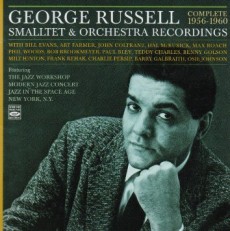
Daily Dose Of Jazz…
George Allen Russell was born on June 23, 1923 in Cincinnati, Ohio, the adopted only child of a nurse and a chef on the B & O Railroad. He sang in the choir of the African Methodist Episcopal Church and listened to the Kentucky Riverboat music of Fate Marable and made his stage debut at age seven, singing “Moon Over Miami” with Fats Waller.
Surrounded by the music of the black church and the big bands played on the Ohio Riverboats, he started playing drums with the Boy Scouts and Bugle Corps, receiving a scholarship to Wilberforce University. There he joined the Collegians, a band noted as a breeding ground for great jazz musicians including Ben Webster, Coleman Hawkins, Charles Freeman, Frank Foster and Benny Carter. He was a member noted jazz composer, Ernie Wilkins. When called up for the draft at the beginning of WWII he was hospitalized with tuberculosis where he was taught the fundamentals of music theory by a fellow patient.
Following his release from the hospital, he played drums with Benny Carter’s band, but after hearing Max Roach decided to give up drumming as a vocation. Inspired by hearing Thelonious Monk’s Round Midnight, George moved to New York in the early Forties and became a member of a coterie of young innovators who frequented the 55th Street apartment of Gil Evans. This clique included Miles Davis, Charlie Parker, Gerry Mulligan and John Lewis.
Back to the hospital in 1945 for 16 months with another bout of tuberculosis Russell worked out the basic tenets of what was to become his Lydian Chromatic Concept of Tonal Organization. This was his theory encompassing all of equal-tempered music which has been influential well beyond the boundaries of jazz. At that time, Russell’s ideas were a crucial step into the modal music of John Coltrane and Miles Davis on his classic recording, Kind Of Blue, and served as a beacon for other modernists such as Eric Dolphy and Art Farmer.
George would go on to compose Cubano Be,Cubano Bop for the Dizzy Gillespie Orchestra, becoming the pioneering experiment of fusing bebop and Cuban jazz elements. The following year he composed A Bird In Igor’s Yard in tribute to Charlie Parker and Igor Stravinsky and recorded at a session led by Buddy DeFranco. He would start playingpiano and go on to work with Artie Shaw, Bill Evans, Art Farmer, Hal McCusick, Barry Galbraith, Milt Hinton, Paul Motian, Paul Bley, Jon Hendricks, Bob Brookmeyer, Steve Swallow, Dave Baker, Eric Dolphy, Sheila Jordan, Tom Harrell, Ray Anderson and numerous and others.
Russell recorded his debut album as a leader, Jazz Workshop, playing very little but masterminding the events of the session in the same vein as Gil Evans. He was to record a number of impressive albums over the next several years, sometimes as primary pianist.
Over the course of his career he would be commissioned to compose a piece for Brandeis University and Swedish Radio for the Radio Orchestra, tour Europe, live in Scandinavia, assume the presidency of the New England Conservatory of Music and was appointed to teach the Lydian Concept in the newly created jazz studies department. He continued to compose major orchestral and chorus works, earned two Grammy nominations for his 45-minute opus The African Game, and toured with a group of American and British musicians, resulting in The International Living Time Orchestra, a group comprised of Dave Bargeron, Steve Lodder, Tiger Okoshi, Brad Hatfield, and Andy Sheppard, who still tour and perform today.
He received a MacArthur Foundation Genius Grant, NEA American Jazz Master Award, two Guggenheim Fellowships and a British Jazz Award. He taught throughout the world, and was a guest conductor for German, Italian, Danish, Finnish, Norwegian, and Swedish radio groups. Pianist, composer, arranger and theorist George Russell died of complications from Alzheimer Disease in Boston, Massachusetts on July 27, 2009.
More Posts: piano
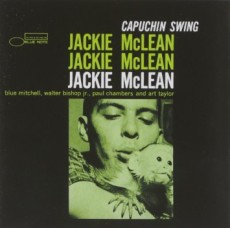
Daily Dose Of Jazz…
Jackie McLean was born John Lenwood McLean on May 17, 1931 in New York City. His father played the guitar in Tiny Bradshaw’s orchestra and started the young man’s musical education until he was eight when the senior John passed away. His godfather, his stepfather who owned a record store and several noted teachers continued his education. He received informal training by neighbors Thelonious Monk, Bud Powell and Charlie Parker.
In high school Jackie played in a band with Kenny Drew, Sonny Rollins and Andy Kirk Jr. By the time he was twenty he was playing alongside Rollins on Miles Davis’ Dig album and went on to record with Gene Ammons, Charles Mingus, George Wallington and to become one of Art Blakey’s Messengers, joining the group after reportedly being punched by Mingus and pulling a knife on the bassist. Fortunately for the jazz world no one was stabbed.
Throughout his early career he was addicted to heroin, which resulted in the loss of his New York City cabaret card. To make a living he undertook a large number of session dates that produced an extensive body of recorded work in the 1950s and 1960s. He recorded for Prestige, then Blue Note both as a leader and sideman. His early recordings as leader were in the hard bop school but later McLean became an exponent of modal jazz without abandoning his foundation in hard bop. His adaptation of modal jazz and free jazz innovations to his vision of hard bop made his recordings from 1962 on distinctive.
He worked with the greats of the time not limited to Donald Byrd, Sonny Clark, Lee Morgan, Ornette Coleman, Dexter Gordon, Freddie Redd, Billy Higgins, Freddie Hubbard, Grachan Moncur III, Bobby Hutcherson, Mal Waldron, Chalres Tolliver, Tony Williams, Michael Carvin, Carl Allen, Bill Hardman, Larry Wilis and Tina Brooks.
By 1967 he abandoned recording for touring and the following year started his teaching career at The Harrt School at the University of Hartford. He would establish the university’s African American Music Department that evolved into the Jackie McLean Institute of Jazz) and its Bachelor of Music degree in Jazz Studies program.
Along with his wife Dollie, they founded the Artists Collective, Inc. of Hartford, and his bands were drawn from his students including Steve Davis, his adopted son Rene and pianist Mark Berman. He received an American Jazz Masters fellowship from the National Endowment for the Arts, inducted into the DownBeat Hall of Fame, and a biography titled Sugar Free Saxophone, as well as numerous other national and international awards. McLean is the only American jazz musician to found a department of studies at a University and a community-based organization almost simultaneously and they each have existed for over three decades.
After a long illness, alto saxophonist, composer, educator and bandleader Jackie McLean passed away on March 31, 2006 in Hartford, Connecticut.
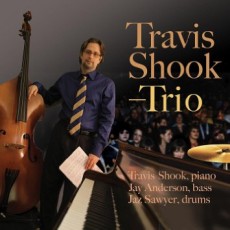
Daily Dose Of Jazz…
Travis Shook was born on March 10, 1969 in Oroville, California and started learning to play the piano at age seven. His family moved to Olympia, Washington when he was ten, spending his adolescent years in the Pacific Northwest. For a period of time he played rock guitar but soon realized jazz improvisation was his passion. At eighteen he enrolled at William Patterson College and studied under Mabern. After graduating he returned to Washington and joined bassist Buddy Catlett’s band where he learned a lot about the history of jazz.
In 1991 he won the Jacksonville Festival’s Great American Piano Competition that led to a contract with Columbia Records/Sony Music. Two years later he moved to New York City and recorded his debut with a quartet that included tony Williams and Bunky Green. Though receiving critical acclaim both in the U.S. and France for this first effort, it was a short-lived relationship when Sony purged a large percentage of the Columbia jazz roster upon acquiring the label in 1993.
After spending some time in obscurity after being attacked by New York Times critic Peter Watrous who criticized one of his performances, he entered a dark period in his life: alcoholism. A year later he got picked up by Betty Carter and went on tour through Europe, but he sunk deeper and added drugs to his plate of demons. Unemployable, he dropped out of the public eye for a number of years. Travis met, moved in with and ultimately married jazz singer Veronica Nunn who helped him overcome his demons and since 1998 he has been sober.
In 1999 Shook and his wife started their own record label, Dead Horse Records, which has released four recordings to date. Over the years he has performed with Reggie Workman, Eddie Harris, Joe Lovano, toots Thielemans, Rufus Reid, Chuck Israels, Ernestine Anderson, Branford Marsalis, Benny Golson and Clifford Jordan as well as Sonny Simmons, Michael Franks, Gino Vanelli, Bob Hope and Chris Botti among others.
His influences were Ahmad Jamal, McCoy Tyner, Duke Ellington, Harold Mabern, Herbie Hancock and Bill Evans but also John Coltrane, Miles Davis and Elvin Jones.Pianist Travis Shook continues to perform and record while building the catalogue of Dead Horse Records.
More Posts: piano
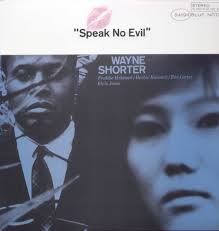
Daily Dose Of Jazz…
Wayne Shorter was born August 25, 1933 in Newark, New Jersey and attended Newark Arts High School where his love of music flourished under the encouragement of his father to take up the saxophone. In his youth Shorter had acquired the nickname “Mr. Gone”, which later became an album title for Weather Report.
Graduating in 1952, he matriculated through New York University in 1956, spent two years in the Army, during which he briefly played with Horace Silver and after his discharge, he played with Maynard Ferguson.
In 1959, Shorter became a Messenger joining Art Blakey, stayed five years and became the bands musical director. When Coltrane left Miles Davis’ band he proposed Wayne, as his replacement but his unavailability di not release him from Blakey until 1964. Along with Herbie Hancock, Ron Carter and Tony Williams, the Second Great Quintet was born.
During his tenure with Miles, Wayne would compose “Prince of Darkness”, “E.S.P.”, “Footprints”, “Sanctuary”, “Nefertiti”, and many others; often providing half of the compositions on an album, typically hard bop workouts with long, spaced-out melody lines above the beat. He remained in Davis’s band after the breakup of the quintet in 1968, playing on the early jazz-fusion recordings including “In A Silent Way” and “Bitches Brew”.
Until 1968, he played the tenor saxophone exclusively but the next year he put down the tenor after his final Davis recording of Filles de Kilimanjaro and began playing the soprano, which he used on his own Super Nova release with Chick Corea and John McLaughlin. By the early 1970s, however, he chiefly played soprano.
Shorter recorded eleven albums for Blue Note Records featuring almost exclusively his own compositions, with a variety of line-ups, quartets and larger groups. He would enlist the talents of Freddie Hubbard, Lee Morgan, McCoy Tyner, Reggie Workman and Elvin Jones.
Juju, Speak No Evil and Adam’s Apple The All Seeing Eye and Schizophrenia played in the spaces between free-jazz and carefully constructed melodies. Hey incorporated old friends like Hancock, Carter, Curtis Fuller and Joe Chambers. He recorded occasionally in the sideman slot with Donald Byrd, McCoy tyner, Grachan Moncur III, Hubbard, Morgan, Hancock and Williams.
In 1970, Shorter formed the fusion group Weather Report with Joe Zawinul and Miroslav Vitous, Airto Moreira and Alphonse Mouzon. They lasted until 1985. One of the most notable alumni included revolutionary bassist Jaco Pastorious and the band produced funk, bebop, Latin jazz, ethnic music and futuristic recordings.
He would record with Milton Nascimento, Carlos Santana, V.S.O.P Quintet, Joni Mitchell, Steely Dan’s Aja, Terri Lynne Carrington, Marilyn Mazur, Jim Beard, Don Henley, Wallace Roney, and can be heard on the Harrison Ford film soundtrack of The Fugitive. By the mid 90s Wayne released his Verve Records debut High Life and received a Grammy for Best Contemporary Jazz Album in 1997.
Into the millennium Shorter has continued to receive wide acclaim working with Hancock once again in 1997, on the much acclaimed and heralded album 1+1. The song “Aung San Suu Kyithem won them both a Grammy Award. He continues to work in a number of group configurations and winning Grammys for his Beyond The Sound Barrier & Alegria – Best Instrumental Jazz Album amongst his 10 Grammy Awards, and has been a Down Beat reigning critics’ poll winner for ten consecutive years and the readers’ for 18. The soprano saxophonist has amassed an impressive discography and continues to compose, reinvent his music, perform and tour.
More Posts: saxophone


